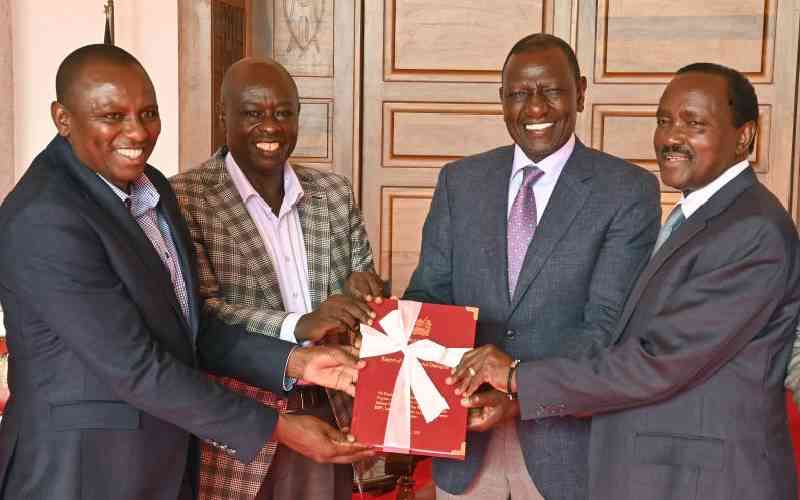When the current Constitution was promulgated in 2010, it marked a significant moment for Kenyans, especially those who had been frustrated, abused, marginalised and victimised by the political, social and legal regime since independence.
The hallmarks of the new social contract included respect for every persons’ human rights regardless of tribe, religion, race, gender or disability; the deliberate insistence on the sovereignty of the people as opposed to political figureheads; devolution of power and resources; rule of law; and, consultation and participation of the people in decision making at every level. It was a document soaked in the blood and sweat of Kenyans who organised, taught, advocated, marched, litigated and protested for democracy sake. Examples include the bloody Saba Saba movement that ultimately led to an end of one-party rule and other piecemeal reforms such as the IPPG led to the repeal of sedition, removal of permits in favour of notifications for assemblies and electoral reforms that led to an unprecedented peaceful transfer of power in 2002.
It is worth noting that some did not support the new constitution. The ‘No Camp’ coalesced against the document on three major grounds including the structure of the executive which they felt was still too powerful, concerns about abortion on demand because the document allowed abortion to save the life of the mother, as well as the explicit provision establishing Kadhi Courts for Muslims which some Christian groups felt amounted to religious favouritism. Nevertheless, when the results were out, they gracefully conceded defeat and were bound together with the rest of Kenyans under the new social contract.
Curiously, once Kenya got to the business of implementing the constitution, certain norms and privileges were too sweet to let go. For example, the all-powerful Provincial Administration structure was maintained by hook or crook by the successive Executive Arms of governments. PCs, DCs, Dos changed names into Regional and County Commissioners and County Administrators and the name of PA changed into National Government Administration Officers.
Granted, there were legitimate reasons for the maintenance of downward executive structures from the location to the presidency, however, such structures would need to be focused on service provision, downward accountability, coordination of national functions on the ground and the advancement of public interest rather than regime interests as before.
Another structure that resisted the constitutional reality is the Constituency Development Fund (CDF) which blatantly defies constitutional provisions on the separation of powers which gives National and County governments exclusive executive powers to implement and spend money on development - whilst confining the National Assembly’s role is legislation, allocation of revenue, appropriation of funds to all state organs exercise oversight, review the conduct of the president and the Deputy and approve declarations of war and extensions of states of emergency. No executive functions!
In fact, in 2016, Justice Lenaola declared CDF unconstitutional. However, Parliament cartwheels to amend the law to try to hide the reality yet maintain control of an annual Sh100 million kitties. CDF has since morphed into ‘National Government CDF’. Since then, Women Representatives have been given an ‘affirmative action fund’ and Senators had been promised an ‘oversight fund’.
Other constitutional provisions yet to be implemented include the two-thirds gender rule which means Parliament is not properly constituted. After 2017 elections, the Supreme Court decision invalidating the results and the tumultuous aftermath, President Uhuru and Raila Odinga reconciled and began an ambitious project of fixing what is wrong in Kenya.
They plan to embark on a fresh constitutional review process. It is interesting that the one institution that has been at the centre of most civil strife in Kenya, which can be fixed without a constitutional review, is the electoral body.
After bungling the 2017 elections, the IEBC somehow endures despite not being properly constituted in terms of a deficit in Commissioners and Substantive CEO: yet it is supposed to be preparing for the 2022 elections and a referendum.
A few weeks ago, the Commission purported to release the 2017 elections report, which was hurriedly pulled down because of staggering irregularities. Perhaps, all along, our weakest link has been elections and not the Constitution that is yet to be fully implemented.
-The writer is a constitutional and human rights lawyer
[email protected]
 The Standard Group Plc is a
multi-media organization with investments in media platforms spanning newspaper
print operations, television, radio broadcasting, digital and online services. The
Standard Group is recognized as a leading multi-media house in Kenya with a key
influence in matters of national and international interest.
The Standard Group Plc is a
multi-media organization with investments in media platforms spanning newspaper
print operations, television, radio broadcasting, digital and online services. The
Standard Group is recognized as a leading multi-media house in Kenya with a key
influence in matters of national and international interest.
 The Standard Group Plc is a
multi-media organization with investments in media platforms spanning newspaper
print operations, television, radio broadcasting, digital and online services. The
Standard Group is recognized as a leading multi-media house in Kenya with a key
influence in matters of national and international interest.
The Standard Group Plc is a
multi-media organization with investments in media platforms spanning newspaper
print operations, television, radio broadcasting, digital and online services. The
Standard Group is recognized as a leading multi-media house in Kenya with a key
influence in matters of national and international interest.









